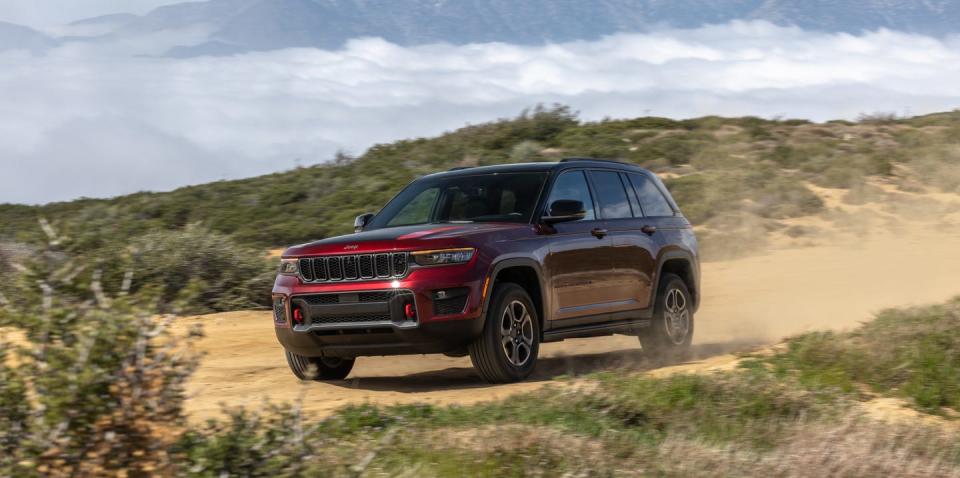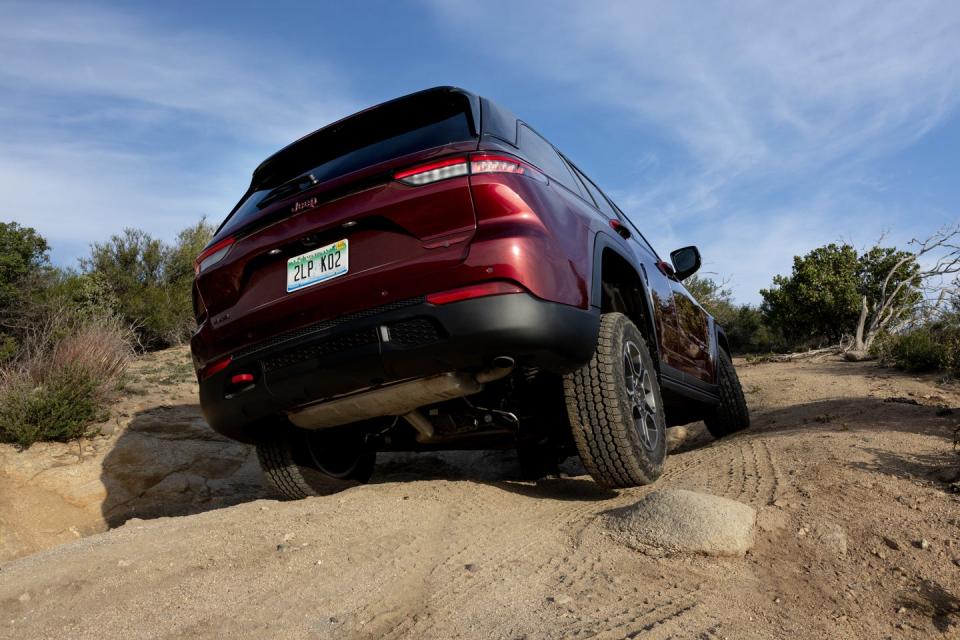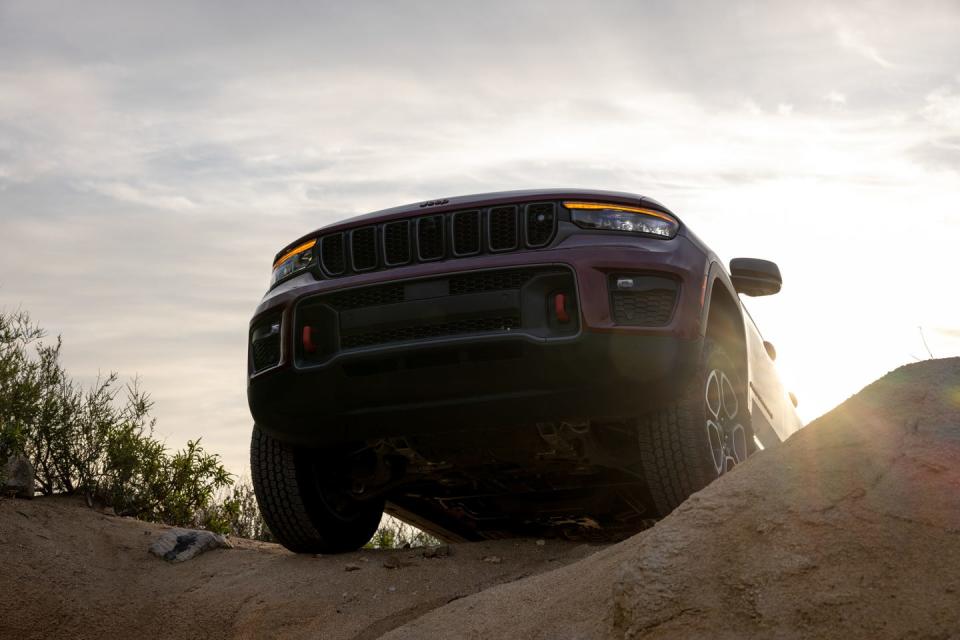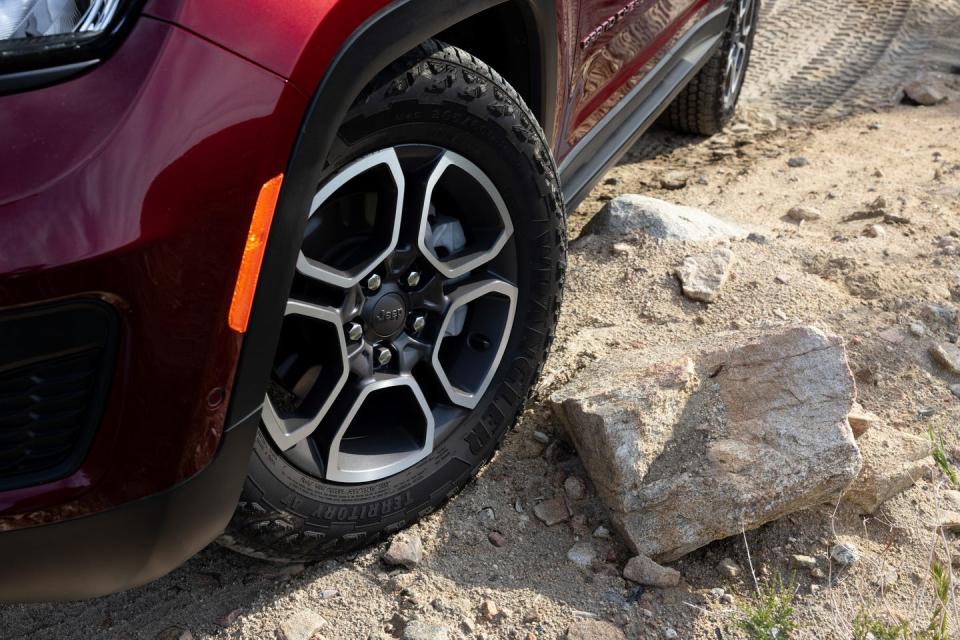Tested: 2022 Jeep Grand Cherokee Trailhawk V-6 Does Jeep Things

With the Jeep Grand Cherokee, the names tell much of the story: Summit Reserve and Trailhawk. The former sounds more like a locally produced Merlot than an off-road machine. It's the wine country touring conveyance of the Grand Cherokee lineup. That's largely borne out by a quick scan of its pavement-oriented tire and clearance specs, not to mention our test results. The Jeep Grand Cherokee Trailhawk, on the other hand, sounds like a machine that wants nothing more than a dirt bath. It looks like a more promising off-highway partner on paper, too, so we had to lay our hands on one to better explore its capabilities.
We had driven the new Grand Cherokee Trailhawk before, during the product launch event in Moab, Utah. It acquitted itself extremely well on a short rough-and-tumble off-road course just outside of town. But when we say "just outside of town," we mean no more than two miles from home base. Very little pavement driving was involved on the Trailhawk portion of the program, so we didn't learn much about living with it day-to-day.

At $56,030 the Trailhawk 4x4 sits just above the volume-selling Limited and below the Overland in the Grand Cherokee pricing and equipment hierarchy. That price gives you standard full-time four-wheel drive, air suspension and adaptive dampers, power heated-and-ventilated leather front seats, a heated steering wheel, and heated rear seats. The logically arrayed controls are laid out across a backdrop of piano black, which means that fingerprints seemingly come standard, with faint scratches optional if you use the wrong type of cleaning cloth. Such marks were so obvious on our test vehicle's flip-down cupholder cover that we simply left it open. Can we reel in this trend, please?
You can also outfit a Trailhawk with options found higher up the food chain such as the Uconnect 5 10.1-inch display screen with navigation, a dual-pane panoramic sunroof, a front passenger display screen, and a full suite of advanced driver-assist features and luxury appointments. Our test sample had all that and more, pushing its price to at an eye-watering $65,535. It would have been $3795 pricier if we'd added the optional 5.7-liter V-8, and the Trailhawk is also available with the 4xe plug-in-hybrid powertrain at a starting price of $64,280.

Our test sample instead had the 3.6-liter Pentastar V-6, which is such an impressive base engine that it comes standard in all models—up to and including the Summit Reserve. Its 293 horsepower and 260 pound-feet of torque feel more than adequate in the Trailhawk, even off-road, where low-range gearing multiplies the torque by a factor of 2.72. Its output flows through the same smooth-shifting eight-speed automatic and 3.45-to-1 final-drive gearing as the Summit Reserve, so it's no surprise that its 7.7-second 60-mph sprint, 15.8-second quarter-mile run, and 5.5-second 50-to-70-mph passing times are within 0.2 to 0.3 second of the results we measured with the Summit Reserve.
The Trailhawk times are fractionally slower, which makes sense when you consider the extra tread squirm that comes with its knobbier 265/60R-18 Goodyear Wrangler Territory All-Terrain tires. We're frankly surprised that the Summit Reserve's wider, pavement-oriented 275/45R-21 Continental CrossContact LX Sport rubber didn't give it a bigger advantage. We saw a larger performance gap in our braking and cornering tests, however, where the Trailhawk drew out its 70-mph stop to 185 feet versus 163 feet for the Summit Reserve, and at the skidpad managed just 0.78 g of stick compared to the Summit Reserve's more robust 0.85 g.


 Yahoo Autos
Yahoo Autos 